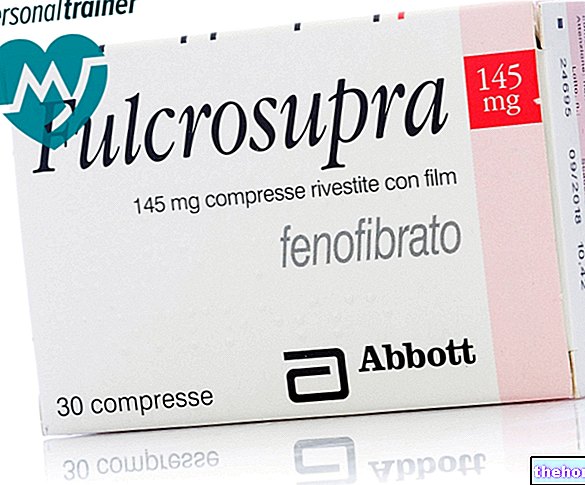Active ingredients: Betamethasone (betamethasone disodium phosphate)
BENTELAN 0.5 mg EFFERVESCENT TABLETS
Bentelan package inserts are available for pack sizes:- BENTELAN 0.5 mg EFFERVESCENT TABLETS
- BENTELAN 1 mg EFFERVESCENT TABLETS
- BENTELAN 1.5 mg / 2 mL SOLUTION FOR INJECTION, BENTELAN 4 mg / 2 mL SOLUTION FOR INJECTION
Indications Why is Bentelan used? What is it for?
Bentelan belongs to the category of systemic corticosteroids - glucocorticoids.
Corticosteroid therapy can be indicated in a wide range of diseases. Among the main ones we should mention:
- bronchial asthma;
- severe llergopathies;
- rheumatoid arthritis;
- collagenopathies;
- inflammatory dermatoses;
- neoplasms especially affecting the lymphatic tissue (acute and chronic malignant haemolymphopathies, Hodgkin's disease).
Other indications are: nephrotic syndrome, ulcerative colitis, segmental ileitis (Crohn's syndrome), pemphigus, sarcoidosis (especially hypercalcemic), rheumatic carditis, ankylosing spondylitis and various dyscrasic haemopathies, such as certain cases of haemolytic anemia, agranulocytosis and thrombocytopenic purpura.
Contraindications When Bentelan should not be used
Systemic infections, if specific anti-infective therapy is not implemented. Immunization with attenuated viruses; other immunizing procedures should not be undertaken in patients receiving glucocorticoids, especially at high doses, due to possible risks of neurological complications and insufficient antibody response. Generally contraindicated in pregnancy and during lactation.
Precautions for use What you need to know before taking Bentelan
In patients on glucocorticoid therapy subjected to particular stress, it is essential to adjust the dose in relation to the extent of the stressful condition.
Glycocorticoids can mask some signs of infection and intercurrent infections can occur during their use due to reduced immune defenses. In these cases, the opportunity to institute an adequate antibiotic therapy must always be evaluated.
Use in active tuberculosis should be limited to cases of fulminant or disseminated disease, in which the glucocorticoid is used with appropriate antituberculous therapy. If glucocorticoids are administered to patients with latent tuberculosis or with a positive response to tuberculin, close surveillance is required. how much disease reactivation can occur In prolonged therapy these subjects should receive chemoprophylaxis.
A state of secondary adrenal insufficiency, induced by the glucocorticoid, can be minimized with a gradual reduction of the dosage. This type of relative insufficiency can persist for up to one year after discontinuation of therapy. So, in any stressful situation that occurs during this period, hormone therapy should be resumed.
Since mineralocorticoid secretion can be compromised, sodium chloride and / or mineralocorticoid should be administered concomitantly.
Due to the possibility of fluid retention, care should be taken when administering corticosteroids to patients with congestive heart failure.
During prolonged therapy and with high doses, should an alteration of the electrolyte balance occur, it is advisable to adjust the sodium and potassium intake.
All glucocorticoids increase calcium excretion.
Corticosteroid therapy can worsen diabetes mellitus, osteoporosis, hypertension, glaucoma and epilepsy.
Psychic alterations of various kinds can occur during therapy: euphoria, insomnia, changes in mood or personality, severe depression or symptoms of real psychosis. A pre-existing emotional instability or psychotic tendencies can be aggravated by the glucocorticoid.
With inhalation use: a range of psychological and behavioral effects may rarely occur, including psychomotor hyperactivity, sleep disturbances, anxiety, depression, aggression, behavioral disturbances (predominantly in children).
It is important to take the dose as directed in the package leaflet or as prescribed by your doctor. You should not increase or decrease the dose without first consulting your doctor.
The same attention should be paid to cases of previous steroid-induced myopathy or peptic ulcer.
In patients with hepatic insufficiency the blood levels of corticosteroids may be increased, as is the case with other drugs that are metabolized in the liver.
In patients with hypothyroidism or with cirrhosis of the liver, the response to glucocorticoids may be increased.
Caution is advised in patients with ocular herpes simplex because corneal perforation is possible.
In patients with hypoprothrombinemia, caution is advised in combining acetylsalicylic acid with glucocorticoids.
Children and adolescents undergoing prolonged therapy must be closely monitored from the point of view of growth and development. Treatment should be limited to minimal doses and the shortest possible time period. In order to minimize hypothalamic-pituitary-adrenal axis suppression and growth retardation, the possibility of single administration every other day should be considered.
In elderly patients, therapy, particularly if prolonged, must be planned in consideration of the higher incidence of side effects such as osteoporosis, worsening of diabetes, hypertension, greater susceptibility to infections, skin thinning.
The maintenance posology must always be the minimum able to control the symptoms; a dosage reduction must always be made gradually over a period of a few weeks or months in relation to the dose previously taken and the duration of therapy.
Glucocorticoids should be administered with caution in the following cases: non-specific ulcerative colitis with danger of perforation, abscesses and pyogenic infections in general, diverticulitis, recent intestinal anastomosis, active or latent peptic ulcer, renal insufficiency, hypertension, osteoporosis, myasthenia gravis.
Interactions Which drugs or foods can modify the effect of Bentelan
Steroids may reduce the effects of anticholinesterases in myasthenia gravis, radiographic contrast media in cholecystography, salicylates, and non-steroidal anti-inflammatory drugs.
In patients with hypoprothrombinemia, caution is advised in associating acetylsalicylic acid with glucocorticoids.
The effect of steroids can be reduced by phenytoin, phenobarbitone, ephedrine and rifampicin.
It may be necessary to change the dosage of anticoagulants administered concomitantly, usually decreasing.
Warnings It is important to know that:
The product must be used under the personal supervision of the physician.
Pregnancy and breastfeeding
In pregnant women and in very early childhood, the product should be administered in cases of real need, under the direct supervision of the doctor.
The appropriateness of breast feeding by patients undergoing treatment with high doses should be evaluated; this is because corticosteroids are secreted into breast milk.
Effects on ability to drive and use machines
The direct influence of the drug on the ability to drive and use machines is not known but may be reduced in rare cases of neurological side effects.
For those who carry out sporting activities
The use of the drug without therapeutic necessity constitutes doping and can in any case determine positive anti-doping tests.
Dosage and method of use How to use Bentelan: Dosage
Adults
Short-term therapies
4-6 tablets a day of BENTELAN 0.5 mg effervescent tablets, gradually reducing this dose according to clinical evolution.
Long-lasting therapies
In the treatment of chronic or subacute morbid forms (collagenopathies, haemolytic anemia, chronic bronchial asthma, nephrotic syndrome, ulcerative colitis, pemphigus), after an attack therapy usually of 6-8 tablets a day of BENTELAN 0.5 mg effervescent tablets , gradually reduce the dosage to the minimum maintenance dose capable of controlling the symptoms.
Maintenance
The maintenance dose in the average weight adult ranges from 1-2 tablets per day.
Children
Children generally tolerate doses proportionally higher than those established for adults: 0.1-0.2 mg / kg of body weight per day is recommended.
BENTELAN tablets are divisible in half to facilitate dosage adjustment, furthermore the solubility in water allows a practical and easy administration.
Aerosol therapy: 0.5-1 mg dissolved at the time of use in 1-2 mL of water.
Overdose What to do if you have taken too much Bentelan
Overdose of glucocorticoids, including betamethasone, does not lead to life-threatening situations. Except for extreme dosages, an overdose of glucocorticoids for a few days is unlikely to produce dangerous results in the absence of specific contraindications such as diabetes mellitus, glaucoma or active peptic ulcer or concomitant treatment with digital, coumarin, or diuretic-type drugs that cause depletion of potassium.
Side Effects What are the side effects of Bentelan
During therapy with cortisones, especially for intense and prolonged treatments, some of the following effects may occur:
- alterations in the water-electrolyte balance, especially hypokalaemia, which rarely and in particularly predisposed patients, can lead to hypertension and congestive heart failure;
- musculoskeletal alterations such as osteoporosis, aseptic osteonecrosis, in particular of the femoral head, myopathies, bone fragility;
- complications affecting the gastro-intestinal system which can lead to the appearance or activation of a peptic ulcer;
- skin alterations such as delays in the healing process, thinning and fragility of the skin;
- neurological alterations such as dizziness, headache and increased intracranial pressure, psychic instability, side effects that can occur with unknown frequency, are psychomotor hyperactivity, sleep disturbances, anxiety, depression, aggression, behavioral disturbances (mainly in children);
- dysendocrinies such as menstrual irregularities, signs of hypercorticism, cushingoid-like appearance, growth disturbances in children;
- interference with the functionality of the pituitary-adrenal axis, particularly in times of stress; decreased tolerability to carbohydrates and possible manifestation of latent diabetes mellitus, as well as increased need for hypoglycemic drugs in diabetics;
- ophthalmic complications such as glaucoma, posterior subcapsular cataract and increased intraocular pressure;
- negativization of the nitrogen balance, therefore, in prolonged treatments, the protein ration must be adequately increased.
Compliance with the instructions given in this leaflet reduces the risk of undesirable effects. It is important that the patient informs his doctor or pharmacist of any undesirable effects, even those not described above.
Expiry and Retention
See the expiration date indicated on the package; this date is intended for the product in intact packaging, properly stored.
Warning: do not use the medicine after the expiry date indicated on the package. Store in the original package to protect the product from moisture.
KEEP THE MEDICINAL PRODUCT OUT OF THE REACH AND SIGHT OF CHILDREN
Source Package Leaflet: AIFA (Italian Medicines Agency). Content published in January 2016. The information present may not be up-to-date.
To have access to the most up-to-date version, it is advisable to access the AIFA (Italian Medicines Agency) website. Disclaimer and useful information.
01.0 NAME OF THE MEDICINAL PRODUCT
BENTELAN EFFERVESCENT TABLETS
02.0 QUALITATIVE AND QUANTITATIVE COMPOSITION
BENTELAN 0.5 mg effervescent tablets
One 0.5 mg tablet contains:
Betamethasone disodium phosphate 0.6578 mg
equal to Betamethasone 0.5 mg
BENTELAN 1 mg effervescent tablets
One 1 mg tablet contains:
Betamethasone disodium phosphate 1,316 mg
equal to Betamethasone 1 mg
For excipients see point 6.1
03.0 PHARMACEUTICAL FORM
Effervescent tablets.
04.0 CLINICAL INFORMATION
04.1 Therapeutic indications
Corticosteroid therapy can be indicated in a wide range of diseases.
Among the main ones we should mention:
-bronchial asthma;
- severe allergies;
-rheumatoid arthritis;
-collagenopathies;
- inflammatory dermatoses;
- neoplasms especially affecting the lymphatic tissue (acute and chronic malignant haemolymphopathies, Hodgkin's disease).
Other indications are: nephrotic syndrome, ulcerative colitis, segmental ileitis (Crohn's syndrome), pemphigus, sarcoidosis (especially hypercalcemic), rheumatic carditis, ankylosing spondylitis and various dyscrasic haemopathies, such as certain cases of haemolytic anemia, agranulocytosis and thrombocytopenic purpura.
04.2 Posology and method of administration
ADULTS:
Short-term therapies:
4-6 tablets per day of BENTELAN 0.5 mg effervescent tablets or 2-3 tablets a day of BENTELAN 1 mg effervescent tablets(equal to 2-3 mg), gradually reducing this dose based on clinical evolution.
Long-lasting therapies
In the treatment of chronic or subacute morbid forms (collagenopathies, haemolytic anemias, chronic bronchial asthma, nephrotic syndrome, ulcerative colitis, pemphigus), after an attack therapy usually of 6-8 tablets per day BENTELAN 0.5 mg effervescent tablets or 2-3 tablets a day of BENTELAN 1 mg effervescent tablets (equal to 3-4 mg) gradually reduce the dosage to the minimum maintenance dose capable of keeping the symptoms under control.
Maintenance:
The maintenance dose in the average weight adult ranges from 1-2 tablets per day.
CHILDREN:
Children generally tolerate doses proportionally higher than those established for adults: 0.1-0.2 mg / kg of body weight per day is recommended.
BENTELAN tablets are divisible in half to facilitate dosage adjustment, furthermore the solubility in water allows a practical and easy administration.
Aerosol therapy: 0.5-1 mg dissolved at the time of use in 1-2 ml of water.
04.3 Contraindications
Systemic infections, if specific anti-infective therapy is not implemented.
Immunization with attenuated viruses; other immunizing procedures should not be undertaken in patients receiving glucocorticoids, especially at high doses, due to possible risks of neurological complications and insufficient antibody response. Generally contraindicated in pregnancy and during lactation (see par. 4.6)
04.4 Special warnings and appropriate precautions for use
In patients treated with glucocorticoids, subjected to particular stress, it is essential to adjust the dose in relation to the extent of the stressful condition.
Glycorticoids can mask some signs of infection and intercurrent infections can occur during their use due to reduced immune defenses. In these cases, the opportunity to institute an adequate antibiotic therapy must always be evaluated.
The use in active tuberculosis should be limited to cases of fulminant or disseminated disease, in which the glucocorticoid should be used with appropriate antituberculous therapy.
If glucocorticoids are administered to patients with latent tuberculosis or a positive response to tuberculin, close surveillance is required as reactivation of the disease may occur.
In prolonged therapy these subjects must receive chemoprophylaxis.
A state of secondary adrenal insufficiency, induced by the glucocorticoid, can be minimized with a gradual reduction of the dosage. This type of relative insufficiency can persist for up to one year after discontinuation of therapy.
So, in any stressful situation that occurs during this period, hormone therapy should be resumed.
Since mineralocorticoid secretion can be compromised, sodium chloride and / or mineralocorticoid should be administered concomitantly.
Due to the possibility of fluid retention, care should be taken when administering corticosteroids to patients with congestive heart failure.
During prolonged therapy and with high doses, should an alteration of the electrolyte balance occur, it is advisable to adjust the sodium and potassium intake.
All glucocorticoids increase calcium excretion.
Corticosteroid therapy can worsen diabetes mellitus, osteoporosis, hypertension, glaucoma and epilepsy.
Psychic alterations of various kinds can occur during therapy: euphoria, insomnia, changes in mood or personality, severe depression or symptoms of real psychosis.
Pre-existing emotional instability or psychotic tendencies can be aggravated by the glucocorticoid.
The same attention should be paid to cases of previous steroid induced myopathy or peptic ulcer.
In patients with hepatic insufficiency the blood levels of corticosteroids may be increased, as is the case with other drugs that are metabolized in the liver.
In patients with hypothyroidism or with cirrhosis of the liver, the response to glucocorticoids may be increased.
Caution is advised in patients with ocular herpes simplex because corneal perforation is possible.
In patients with hypoprothrombinemia, caution is advised in associating acetylsalicylic acid with glucocorticoids.
Children and adolescents undergoing prolonged therapy must be closely monitored from the point of view of growth and development.
Treatment should be limited to minimal doses and the shortest possible time period. In order to minimize the suppression of the hypothalamic-pituitary-adrenal axis and the growth delays, the possibility of a single administration every other day should be considered.
In elderly patients, therapy, particularly if prolonged, must be planned in consideration of the higher incidence of side effects such as osteoporosis, worsening of diabetes, hypertension, greater susceptibility to infections, skin thinning.
The maintenance posology must always be the minimum able to control the symptoms; a dosage reduction must always be made gradually over a period of a few weeks or months in relation to the dose previously taken and the duration of therapy.
Glucocorticoids should be administered with caution in the following cases:
non-specific ulcerative colitis with danger of perforation, abscesses and pyogenic infections in general, diverticulitis, recent intestinal anastomosis, active or latent peptic ulcer, renal insufficiency, hypertension, osteoporosis, myasthenia gravis.
The product must be used under the personal supervision of the physician.
Systemic effects may occur with inhaled corticosteroids, particularly when prescribed in high doses for prolonged periods. These effects are less likely to occur than with oral corticosteroid treatment. Possible systemic effects include Cushing's syndrome, Cushingoid aspect, adrenal suppression, growth retardation in children and adolescents, decreased bone mineral density, cataracts, glaucoma and, more rarely, a range of psychological or behavioral effects including psychomotor hyperactivity, disturbances sleep, anxiety, depression or aggression (particularly in children). It is therefore important that the dose of inhaled corticosteroid is the lowest possible dose with which effective control of asthma is maintained.
For those who carry out sporting activities
The use of the drug without therapeutic necessity constitutes doping and can in any case determine positive anti-doping tests.
04.5 Interactions with other medicinal products and other forms of interaction
Steroids may reduce the effects of anticholinesterases in myasthenia gravis, radiographic contrast media in cholecystography, salicylates, and non-steroidal anti-inflammatory drugs.
In patients with hypoprothrombinemia, caution is advised in associating acetylsalicylic acid with glucocorticoids.
The effect of steroids can be reduced by Phenytoin, Phenobarbitone, Ephedrine and Rifampicin.
It may be necessary to change the dosage of anticoagulants administered concomitantly, usually decreasing.
04.6 Pregnancy and lactation
In pregnant women and in very early childhood, the product should be administered in cases of real need, under the direct supervision of the doctor.
Depression of hormone levels has been observed in pregnancy, but the significance of this finding is unclear.
The appropriateness of breast feeding by patients undergoing treatment with high doses should be evaluated; this is because corticosteroids are secreted into breast milk.
04.7 Effects on ability to drive and use machines
There is no known direct influence of the drug on the ability to drive and use machines which may however be reduced in rare cases of neurological side effects.
04.8 Undesirable effects
During therapy with cortisones, especially for intense and prolonged treatments, some of the following effects may occur:
- alterations in the water-electrolyte balance, especially hypokalaemia, which rarely and in particularly predisposed patients, can lead to hypertension and congestive heart failure;
- musculoskeletal alterations, such as osteoporosis, aseptic osteonecrosis, in particular in the femoral head, myopathies, bone fragility;
- complications affecting the gastro-intestinal system which can lead to the appearance or activation of a peptic ulcer;
- skin alterations such as delays in healing processes; thinning and fragility of the skin;
- neurological alterations such as dizziness, headache and increased intracranial pressure, psychic instability, psychomotor hyperactivity, sleep disturbances, anxiety, depression, aggression, behavioral disturbances (mainly in children) with unknown frequency;
- dysendocrinies such as menstrual irregularities, signs of hypercorticism, throat-like appearance, growth disturbances in children;
- interference with the functionality of the pituitary-adrenal axis, particularly in times of stress; decreased tolerability to carbohydrates and possible manifestation of latent diabetes mellitus, as well as increased need for hypoglycemic drugs in diabetics;
- ophthalmic complications such as glaucoma, posterior subcapsular cataract and increased intraocular pressure;
- negativization of the nitrogen balance, for which, in prolonged treatments, the protein ration must be adequately increased.
04.9 Overdose
Overdose of glucocorticoids, including betamethasone, is not life threatening. With the exception of extreme dosages, an overdose of glucocorticoids for a few days is unlikely to produce dangerous results in the absence of specific contraindications such as diabetes mellitus, glaucoma or active peptic ulcer or concomitant treatment with digitalis, coumarin or diuretic-type drugs that result in depletion of potassium.
05.0 PHARMACOLOGICAL PROPERTIES
05.1 Pharmacodynamic properties
Betamethasone is a synthetic corticosteroid with an intense anti-inflammatory and anti-reactive activity, equal to about 8-10 times that of Prednisolone weight by weight.
It has little tendency to cause the side effects characteristic of corticosteroids.
It has no appreciable mineralocorticoid activity and cannot therefore be used alone in the treatment of adrenal insufficiency.
05.2 Pharmacokinetic properties
After oral administration, blood concentrations are detectable in man after 20 minutes, the blood peak occurs after 2 hours, the concentration gradually decreases over 24 hours.
The plasma half-life after both oral and parenteral administration is ≥ 300 minutes.
Betamethasone is metabolised in the liver, patients with liver disease have slower drug clearance than healthy subjects.
Protein binding is high, mainly with albumin.
Betamethasone disodium phosphate is extremely soluble; the effervescent excipients present in the BENTELAN tablet ensure its complete and rapid dissolution in water before administration resulting in:
- rapidity of absorption and therefore of action;
- homogeneous distribution of the active substance over a large surface of the gastric mucosa and ultimately less irritation at the gastric level compared to other poorly soluble corticosteroids;
practicality of administration especially in children and seriously ill.
05.3 Preclinical safety data
The LD50 in mice was 1460 mg / kg, oral doses up to 1 mg / kg were administered to rats for 9 months which caused lymphopenia, eosinopenia and neutrophilia.
Chronic toxicity studies in dogs have highlighted the suppressive effect on the cyclical nature of estrus.
In rats, a reduction in fertility was observed in both sexes after oral administration. At therapeutic doses, by parenteral route, it was teratogenic in rabbits and rats, while at doses four to eight times higher than the therapeutic ones it caused the death of the embryos.
06.0 PHARMACEUTICAL INFORMATION
06.1 Excipients
BENTELAN 0.5 mg effervescent tablets:
Sodium citrate, sodium bicarbonate, sodium saccharin, polyvinylpyrrolidone, sodium benzoate.
BENTELAN 1 mg effervescent tablets:
Sodium citrate, sodium bicarbonate, polyvinylpyrrolidone, sodium benzoate.
06.2 Incompatibility
There are no known incompatibilities.
06.3 Period of validity
3 years.
06.4 Special precautions for storage
Store the product in the original packaging to protect it from moisture.
06.5 Nature of the immediate packaging and contents of the package
Heat-sealed aluminum strips internally covered with low density polyethylene.
BENTELAN 0.5 mg effervescent tablets - 10 tabs
BENTELAN 1 mg effervescent tablets - 10 tabs
06.6 Instructions for use and handling
None in particular
07.0 MARKETING AUTHORIZATION HOLDER
DEFIANTE FARMACEUTICA S.A.
Rua dos Ferreiros, 260 - Funchal, Madeira (Portugal)
Dealer for Italy: BIOFUTURA PHARMA S.p.A.
Via Pontina km 30,400 - 00040 Pomezia (Rome)
08.0 MARKETING AUTHORIZATION NUMBER
BENTELAN 0.5 mg effervescent tablets - 10 tablets AIC. n. 019655012
BENTELAN 1 mg effervescent tablets - 10 tablets AIC n.019655051
09.0 DATE OF FIRST AUTHORIZATION OR RENEWAL OF THE AUTHORIZATION
June 2000
10.0 DATE OF REVISION OF THE TEXT
March 2012




























